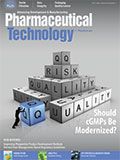Playbooks Are Not Just Child’s Play
Cultural and language discrepancies during an audit can be resolved using what many call a “playbook,” says Siegfried Schmitt, PhD, vice-president, technical, Parexel Consulting.
Q. We are preparing for our first inspection by an overseas regulatory agency. This will be a challenge from several perspectives: language, culture, and presentation style. We believe we have covered the first two issues through highly experienced translators and cultural training sessions with coaches. Our concern is about how to present and respond in an appropriate manner. Can you give any advice?
A. Hosting a foreign agency for the first time is always challenging, but as with all inspections, nothing beats preparation, practice, practice, and more practice. Even seasoned personnel can become flustered, nervous, or even unsure how to respond to unfamiliar questions or requests, especially when asked in a foreign tongue. One tool proven to be particularly useful in such situations is a playbook. Playbooks may be known by other terms, but essentially these are aide-memoires that function as references for company representatives who need to present or answer questions from inspectors or auditors. The playbook may include prepared answers to anticipated questions the auditor may ask and/or detailed information about process steps.
How detailed should these playbooks be and in what format? Here is what has stood the test of time:
- Always start with a succinct, logical, and convincing few lines of text and/or graphics.
- If necessary, have a second playbook with more detailed, supporting information.
- Have a third party (i.e., someone unfamiliar) review your playbook and/or provide feedback.
The first point is the most important. As we all are experts in what we do, we can talk in great detail about it. But inspectors do not have unlimited time. They want to receive answers that provide them with clear and easy-to-comprehend information. This is best illustrated with an example. The inspector may ask: ‘What is your bioburden control strategy for this product?’ Without a playbook, the answer may go like this: ‘In step 5 after vessel 234 on the second floor, remember you saw this reactor on the tour of the facility. We have installed a 0.2-micron filter …’
With a playbook, the answer would be more similar to this: ‘We have a bioburden control strategy that takes into account environment, process equipment, material handling, product properties, and regulatory expectations. For the five steps produced in our facility, we have prepared a strategy paper, which has subsequently been verified during the validation studies and ongoing monitoring.’
Of course, should the inspector then want to know more details, this is when all the evidence can be presented. Again, it may be useful to have a playbook ready for this, especially if many activities should be organized in a logical sequence and timeline.
Playbooks have several benefits, as they help those responding in an inspection to give clear answers. They also help prepare the site personnel to find answers to difficult questions (e.g., why certain deviation investigations are overdue, or why a particular change hasn’t been documented as per requirements). They also help summarize convoluted event histories or complex situations. Often, one has to overcome obstacles to reach a successful outcome, and playbooks help to focus on the positives, rather than to overemphasize the difficulties experienced.
Then why should one have these playbooks reviewed by someone from the outside? Well, the inspector will be exactly such a person (i.e., an outsider who isn’t necessarily familiar with the terminology, the facility, or the processes used at the site). Therefore, by having an outside third party review the playbook, you essentially perform a dry run of the inspection.
In summary, these playbooks are a useful tool in any inspection or audit, whether foreign or local, but writing these in a clear and concise manner is anything but child’s play.
Article Details
Pharmaceutical Technology
Vol. 43, No. 7
July 2019
Page: 54
Citation
When referring to this article, please cite it as S. Schmitt, "Playbooks Are Not Just Child’s Play," Pharmaceutical Technology 43 (7) July 2019.
